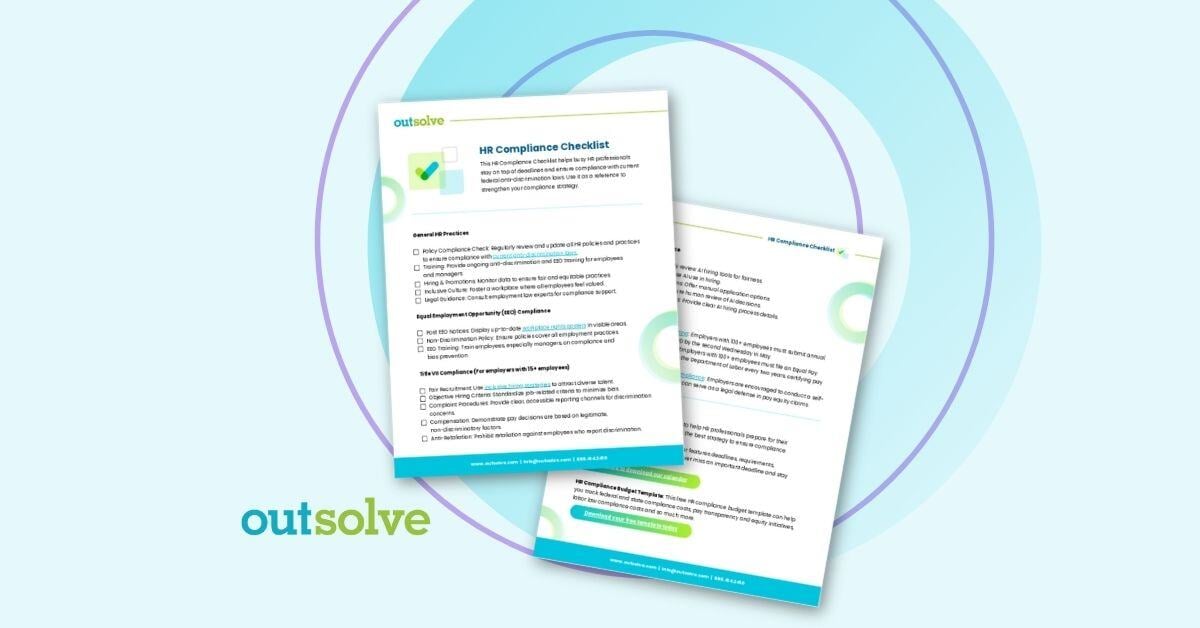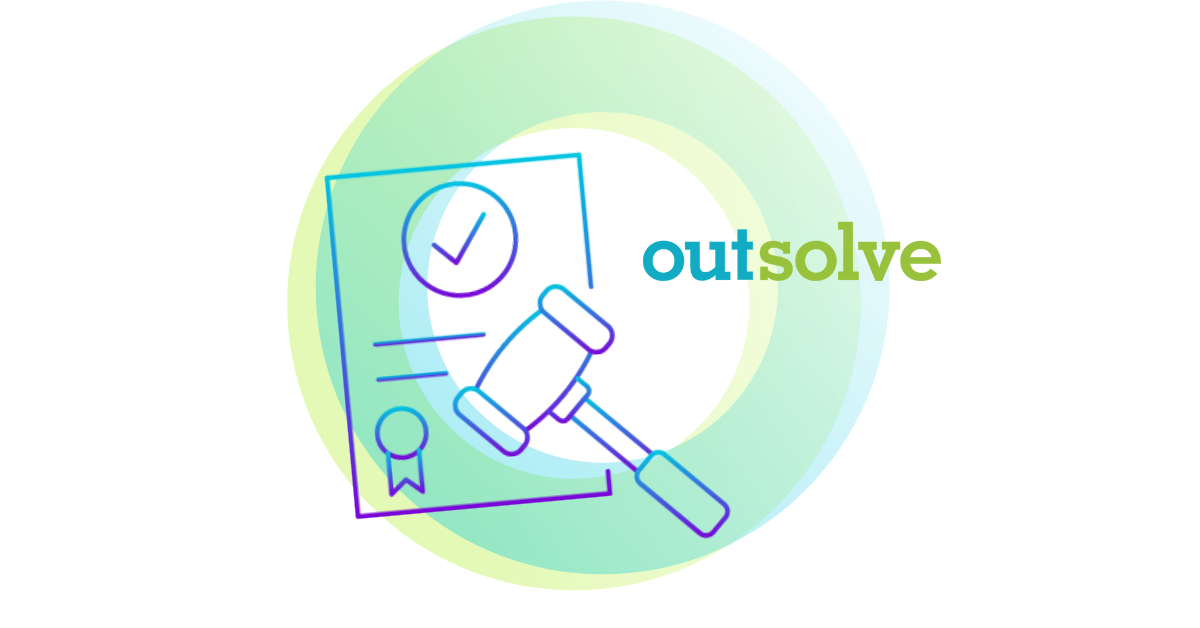
Updated November 25, 2025
If your business holds federal contracts, now is the time for you to review OFCCP's new jurisdictional thresholds for Section 503 and VEVRAA that went into effect on October 1, 2025. The new threshold requirements are listed below for Section 503 and VEVRAA.
New Jurisdictional Thresholds & AAP Requirements
Section 503: The basic coverage threshold rose from $15,000 to $20,000. AAP requirements continue for contractors and subcontractors with at least 50 employees and a single contract of $50,000 or more.
VEVRAA: The threshold increased from $150,000 to $200,000. AAP requirements apply to contractors and subcontractors with at least 50 employees and a single federal contract of $200,000 or more.
Do you know what Section 503 of the Rehabilitation Act and the Vietnam Era Veterans' Readjustment Assistance Act (VEVRAA) mean for your organization? These two regulations are key to ensuring fair hiring practices and fostering inclusive workplaces, especially when it comes to IWD and protected veterans. If you're curious as to how these laws might impact your compliance strategy, read on!
Either way, understanding Section 503 and VEVRAA is a must, not only to remain compliant, but also to help build a workplace that values inclusion, equity, and opportunity for all.
Let’s get into more specifics on all of this and how trusted partners like OutSolve can help. Here are three key takeaways you’ll learn in this article:
- An overview of Section 503 and VEVRAA
- HR’s responsibilities when it comes to Section 503 and VEVRAA
- How you can stay ahead of upcoming changes in enforcement
Section 503: Supporting Individuals with Disabilities in the Workforce
What It Is: Section 503 of the Rehabilitation Act of 1973 is a federal law that prohibits employment discrimination against individuals with disabilities and requires affirmative action to recruit, hire, promote, and retain them.
This threshold of who needs to comply with this was law was updated in October 2025. You must comply if you meet the following:
- Basic Coverage: Any number of employees + a contract of more than $20,000.
- Affirmative Action Plan Requirements: 50 of more employees + a contract of $50,000 or more
Here are the Key Requirements:
- 7% Utilization Goal: 7% is the current utilization goal for individuals with disabilities in each job group of a contractor’s workforce. This goal is meant to serve as a benchmark and not a rigid quota.
If your organization has fewer than 100 employees, then you may apply the 7% goal to your workforce as a whole. HR teams should use this benchmark to assess whether their recruitment and outreach strategies are effectively reaching people with disabilities. - Voluntary Self-Identification: Contractors must invite applicants and employees to voluntarily self-identify as individuals with disabilities:
- During the pre-offer application stage
- After a job offer is made
- Periodically (at least every five years) for current employees
- Recordkeeping and Metrics: Contractors must collect and analyze data on:
- The number of applicants and hires who self-identify
- Total job openings and number of applicants
- Effectiveness of outreach efforts
- Outreach and Recruitment: Contractors are expected to reach out to organizations that support individuals with disabilities, such as local vocational rehabilitation centers, community organizations, or disability-focused job boards. You’ll also need to assess the effectiveness of your efforts annually and document the results.
VEVRAA: Ensuring Opportunity for Protected Veterans
What It Is: VEVRAA is a federal law that that was originally enacted in 1974 to assist returning Vietnam veterans but has expanded to cover other categories of veterans. VEVRAA aims to protect veterans from employment discrimination and ensure they receive equal opportunities in the workplace, by requiring federal contractors and subcontractors to take affirmative action to employ and advance qualified protected veterans. These include:
- Disabled veterans
- Recently separated veterans
- Armed Forces service medal veterans
- Active-duty wartime or campaign badge veterans
The threshold for VEVRAA requirements was also changed in October 2025. You must comply if you meet the following:
- Basic Coverage: Any number of employees + a contract of $200,000 or more
- Affirmative Action Plan Requirements: 50 of more employees + a contract of $200,000 or more
Here are the Key Requirements:
- Annual Hiring Benchmark: The OFCCP publishes an updated hiring benchmark for protected veterans every 1-2 years. The current benchmark, as of July 30, 2025, of 5.1% is applied to the entire workforce, not per job group. Contractors have the option to use the national benchmark as prescribed or calculate their own based on local labor data.
- Self-Identification Requirements: Much like Section 503, VEVRAA requires contractors to invite applicants to self-identify their veteran status:
- At the pre-offer stage
- At the post-offer stage
- Periodically for current employees
- Mandatory Job Listings: One of VEVRAA’s more specific mandates is the requirement to list job openings with the appropriate Employment Service Delivery System (ESDS), which is usually your state workforce agency. HR must ensure job postings are:
- Provided in a format accepted by the state
- Timely and accurate
- Reflective of all open positions (with limited exceptions)
- Veteran Outreach: Like Section 503, VEVRAA requires outreach to veteran-focused organizations. This may include local veterans’ service organizations (VSOs), job fairs, or community groups that support veteran reintegration.
- Three-Year Record Retention: Contractors must retain records related to outreach, self-identification, job listings, and applicant data for at least three years.
Enforcement: What’s Changing and Why You Should Pay Attention
The Changing Role of OFCCP: As of July 9, 2025, The Office of Federal Contract Compliance Programs (OFCCP) is currently responsible for enforcing both Section 503 and VEVRAA. The agency conducts compliance evaluations, audits AAPs, and investigates complaints of discrimination or noncompliance. With that said, there are proposed changes planned for OFCCP. Specifically:
- The 2025 proposed Department of Labor budget includes a a plan to defund the OFCCP effectively eliminating the agency.
- Section 503 enforcement will move to the EEOC (Equal Employment Opportunity Commission). The EEOC already enforces the Americans with Disabilities Act (ADA) and other disability-related employment laws.
- VEVRAA enforcement will be transferred to VETS (Veterans' Employment and Training Service), which is already involved in veteran workforce policy.
While the enforcement agency may change, the legal obligations do not. HR must remain proactive, especially during periods of regulatory uncertainty.
August 4, 2025 Update: The Senate Appropriates Committee advanced a bill that included funding for OFCCP for Fiscal Year 2026.
November 25, 2025 Update: We are awaiting updated budgets from the DOL to see whether or not the OFCCP will have funding or be dismantled. Subscribe to our weekly newsletter for updates on this developing story.
Penalties for Non-Compliance
Contractors found to be out of compliance may face penalties such as termination of existing federal contracts, debarment from future contracts, and formal enforcement actions as well as reputational damage.
How OutSolve Can Help
With so many moving parts, it’s easy for even experienced HR teams to feel overwhelmed. That’s where OutSolve comes in. Since 1998, OutSolve has helped federal contractors with affirmative action and compliance reporting. We specialize in Section 503 and VEVRAA compliance and we know how to help you succeed with this important aspect of compliance.
Our Services Include:
- Developing AAPs for Section 503 and VEVRAA that are customized to your company
- Outreach strategy support, including recommended organizations and documentation templates
- Training for HR teams on self-identification, data tracking, and recordkeeping
We act as your behind-the-scenes compliance partner, giving you the peace of mind to focus on hiring and supporting great talent.
What Section 503 and VEVRAA Mean for Your Organization
At the end of the day, Section 503 and VEVRAA are more than just regulations. They’re opportunities as well. Opportunities to create fair, accessible workplaces for veterans and individuals with disabilities. Opportunities to lead with equity and intention. Finally, they’re opportunities to demonstrate that your organization practices these components and doesn’t just talk about them.
It’s key to remember that, even though the enforcement agencies will be changing, your legal obligations under both laws will not.
By understanding your responsibilities and partnering with a trusted expert like OutSolve, you can turn compliance into a strategic advantage.
Ready to Strengthen Your Compliance Strategy?
Let OutSolve help you build audit-ready plans and stronger inclusion programs. Reach out to us today to get started. If you have questions about these requirements, join HR Gumbo City, our Slack community where HR professionals can learn best practices and tips from one another.
John is a graduate from California State University, Chico with a degree in Business Administration and is a Society for Human Resources Management (SHRM) Senior Certified Professional. Throughout his 20 years in EEO consulting, John has served in various leadership roles, conducted training for organizations large and small, presented at the NILG, AAAED, and ILG conferences. He has been a contributor on several industry webinars and author and editor for numerous industry blogs and articles.
Weekly OutLook
Featured Posts
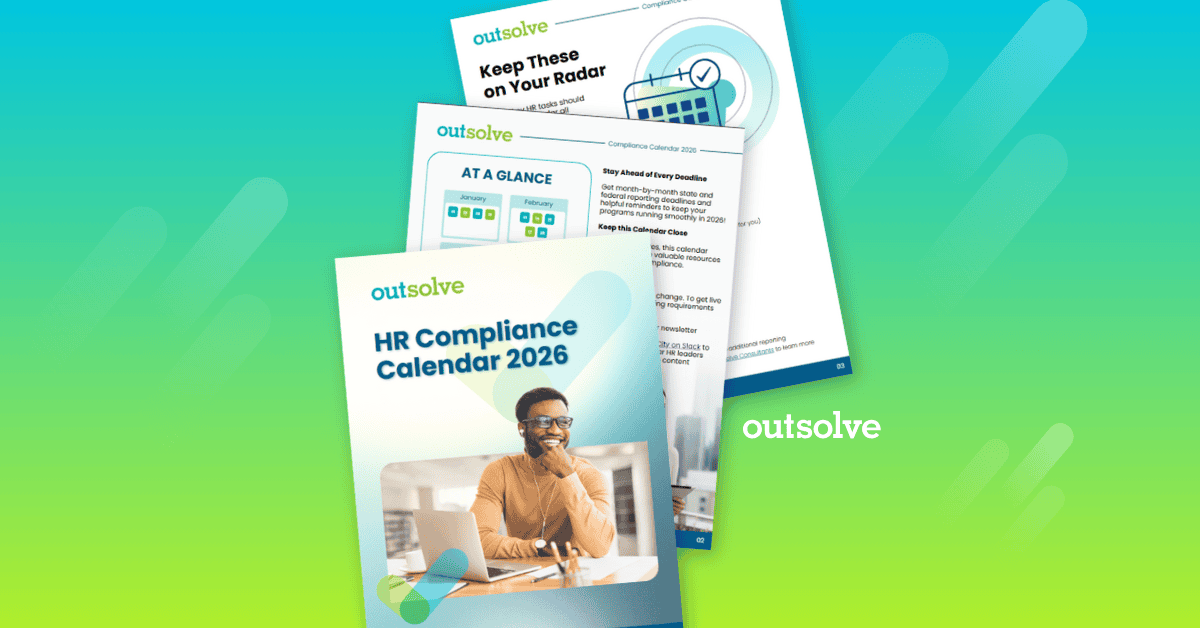
New Year, New Deadlines: 2026 HR Compliance Calendar
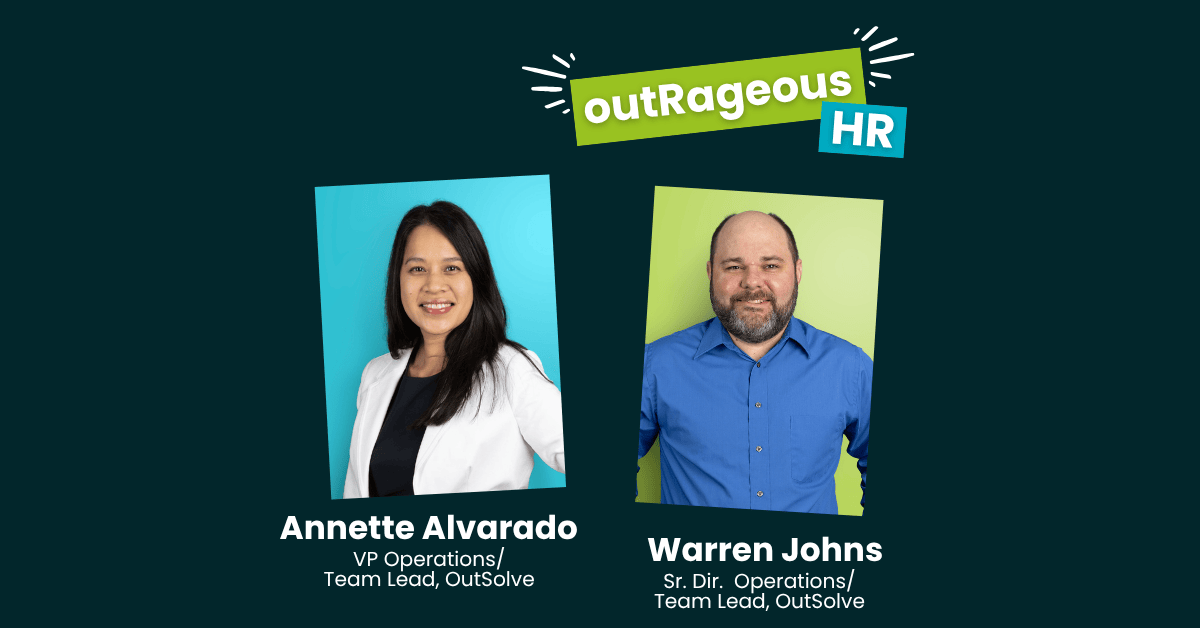
outRageous HR: Plan Now or Pay Later
Related Posts
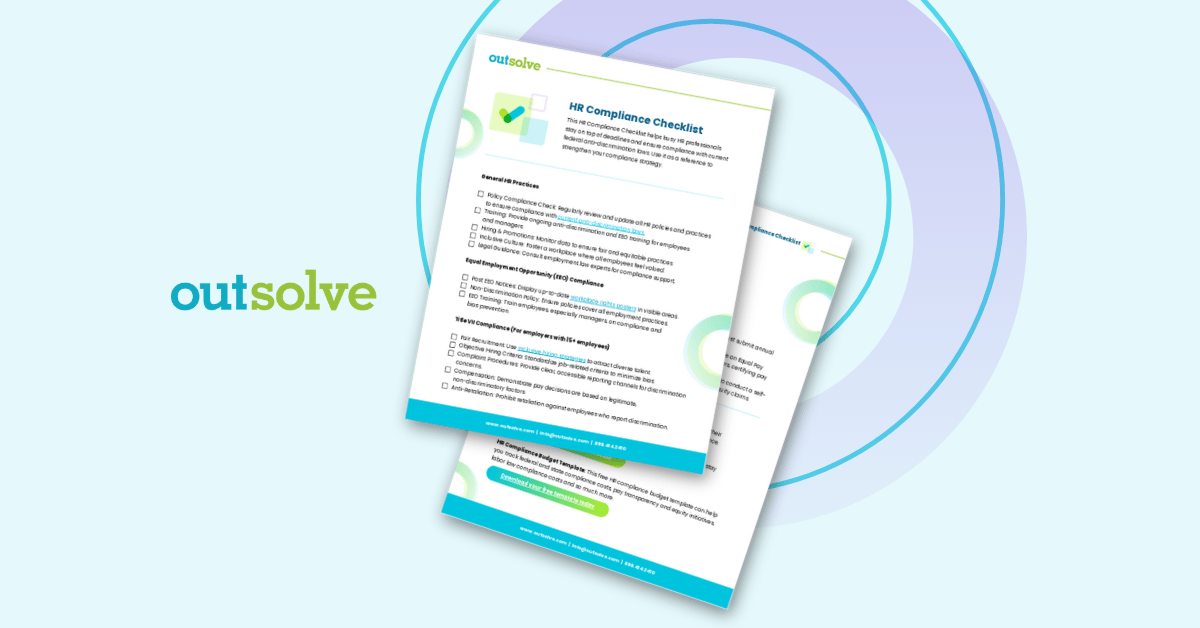
HR Compliance Mistakes Are Expensive: Here’s How OutSolve Keeps You Covered
HR compliance mistakes are one of the biggest and most avoidable drains on your budget. A single error—whether a missing Form I-9, an outdated...

Former EEOC and OFCCP Officials Respond to DOJ Memo on “Unlawful Discrimination”
On November 18, 2025, EEO Leaders, an organization comprised of Democratic-aligned former EEOC and OFCCP officials, published a response (“EEO...

In-House or Outsourced I-9 Management: Which Is Best for Your Organization?
Every U.S. employer, regardless of size or industry, is required by law to confirm each new hire’s identity and verify that they are authorized to...
 John Piatt, SHRM-SCP
John Piatt, SHRM-SCP


